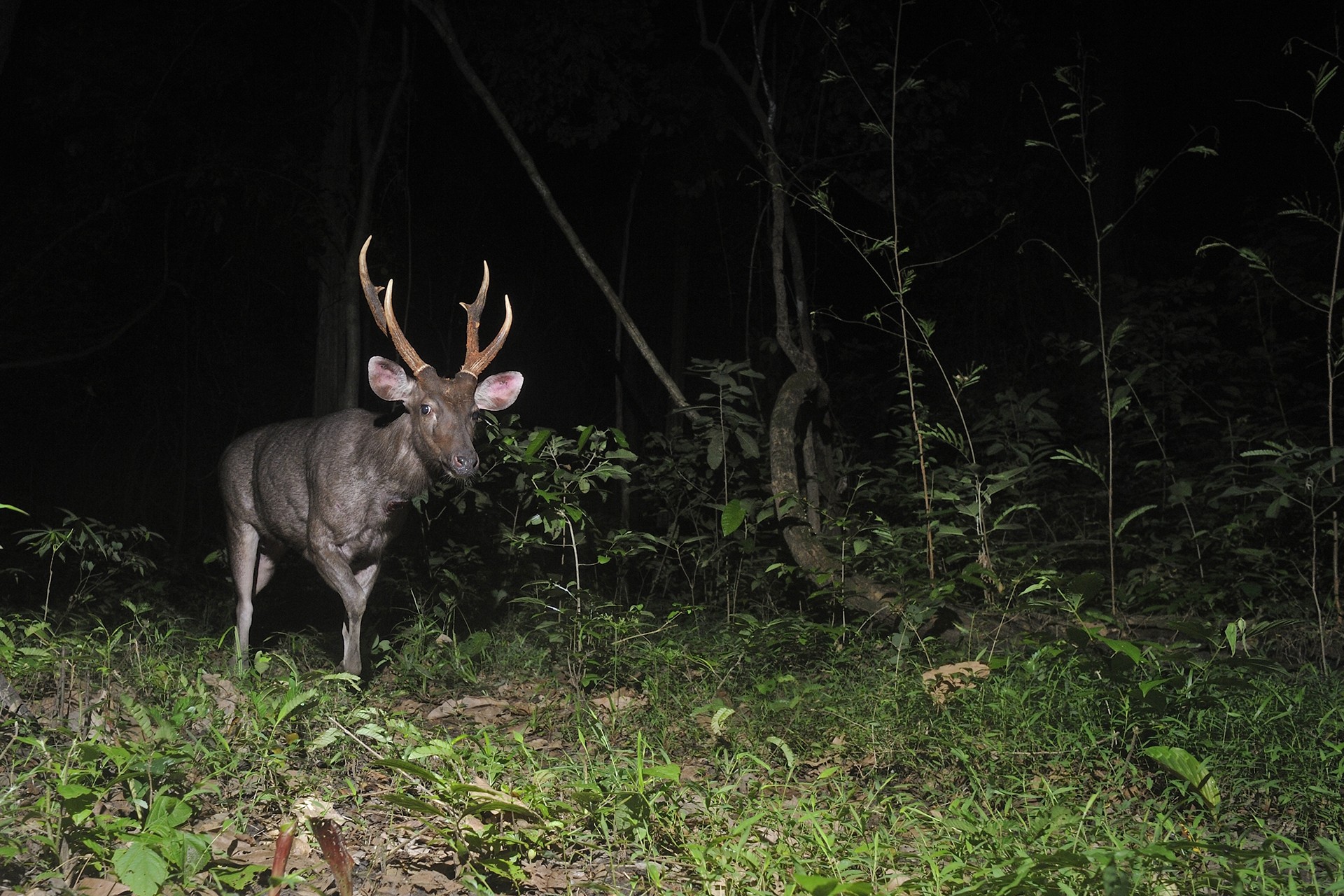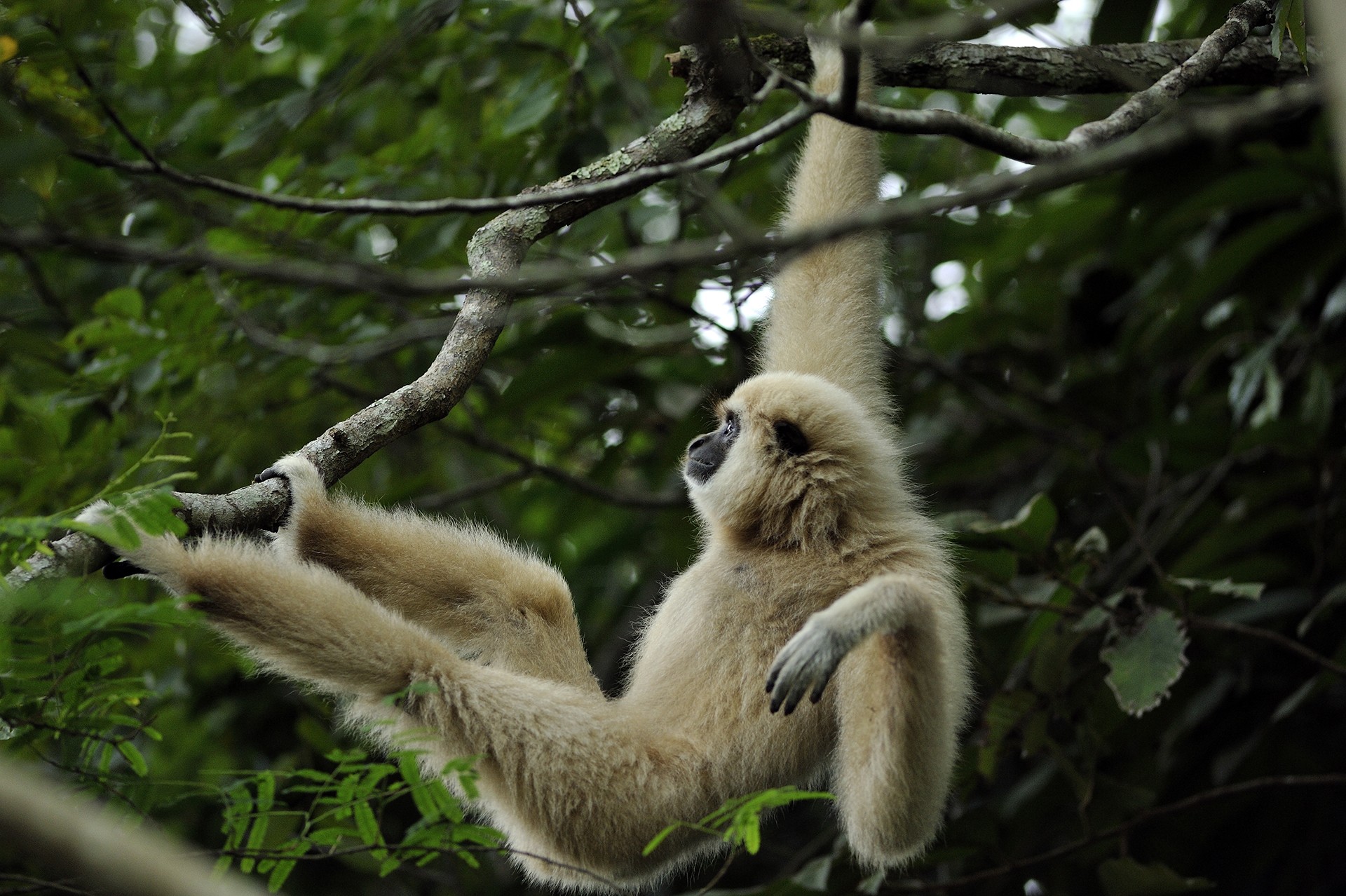This is the second story in a series of articles on frugivory and seed dispersal, leading up to the FSD 2020 symposium in March next year.
Seed-dispersing animals are essential to the maintenance of tropical rainforest ecosystems. These animals can vary in size, from a tiny flowerpecker to a massive mammal such as an elephant, but they are all attracted to the fruit reward that surrounds the seeds of the plant. While animals as divergent as a flowerpecker and an elephant will choose different fruit species to eat, animals with overlapping diets can differ vastly in their morphology and behaviour, and consequently in their ability to disperse. For example, both gibbons and elephants are attracted to the fruit of the rainforest tree, Platymitra macrocarpa, even though there is a 1000x difference in their body weight and their core diets are entirely different. Understanding how this variation influences the seed dispersal effectiveness of animals is essential for predicting the future of rain forest ecosystems.
The seed dispersal effectiveness of an animal is calculated by measuring how many seeds they disperse (termed “quantity”) and the likelihood of these seeds germinating and establishing a new plant (termed “quality”). Animals show huge variation in both these components, but it is the combined value (quantity x quality) that determines their contribution to the regeneration of a particular plant species.
Platymitra macrocarpa is a rainforest tree found in the Khao Yai National Park in Thailand. The fruits of this tree are termed “megafaunal”, because of their large size (80 x 60 mm, length x width) which is thought to limit effective dispersers to “megafauna” such as elephants. Yet, a variety of other animals consume this fruit, including the sambar deer, muntjacs (barking deer), macaques, bears, squirrels, and also gibbons. We compared the seed dispersal effectiveness of these different animals, expecting to find elephants to be responsible for most of the seeds that established seedlings.
How does one calculate seed dispersal effectiveness? This is done by observing the feeding of animals in the canopy and on the ground either through direct observations or using camera trap, and by monitoring the fate of these seeds and fruits on the ground.
Sambar deer and gibbons consumed the most fruits and dispersed the most seeds, despite their very different physiologies and behaviour: the diet of gibbons is mostly composed of fruit, while sambar deer are herbivores and consume fruit less often. Elephants and bears were rare visitors to the trees, but most seedlings that established came from the seeds dispersed by them. We think this is because the seeds swallowed by them are buried in large defecations where they escape detection by seed-destroying beetles. Sambar deer disperse seeds by regurgitation (spitting out seeds after removing the fruit pulp) because their guts do not allow large seeds to pass through, while gibbons defecate the seeds in much smaller dungs. Hence, most seeds dispersed by sambar and gibbons end up on the forest floor and predation by beetles hinder their germination. Macaques, squirrels and muntjacs also consumed fruit but made very minor contributions to seedling establishment.
There were two important conclusions we could draw from the study. First, this megafaunal fruit was indeed mostly reliant on megafauna for effective seed dispersal. This was not because other animals were physically unable to disperse the seeds, but because seed predation made burial in large dungs important. Smaller animals might provide a back-up dispersal service but we would expect Platymitra populations to decline in the absence of elephants and possibly bears as well. Second, many researchers have considered sambar deer to be large enough to be labelled megafauna, but our study found them to play a very different role to dispersal compared to elephants, as their ability to disperse seeds was limited by their physiology.
Around 40 per cent of the Platymitra fruit crop was not eaten, suggesting that the current megafauna population in Khao Yai might be insufficient to maintain the species in the long term. This, in turn, underscores the importance of ensuring a population of megafauna that is capable of continuing the many pivotal roles they play in ecosystems – including that of seed dispersal.
McConkey, K. R., Nathalang, A., Brockelman W. Y., Saralamba, C., Matmoon, U., Somnuk, R., Srinoppawan, K. 2018. Different megafauna vary in their seed dispersal effectiveness of the megafaunal fruit Platymitra macrocarpa (Annonaceae). PLoS ONE 13(7): e0198960






